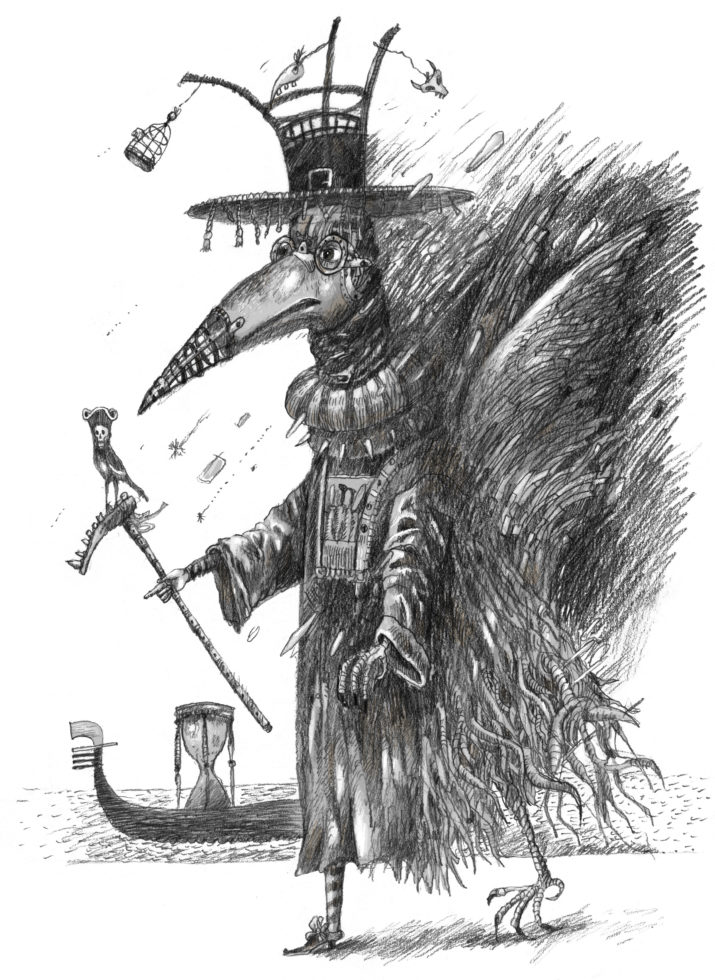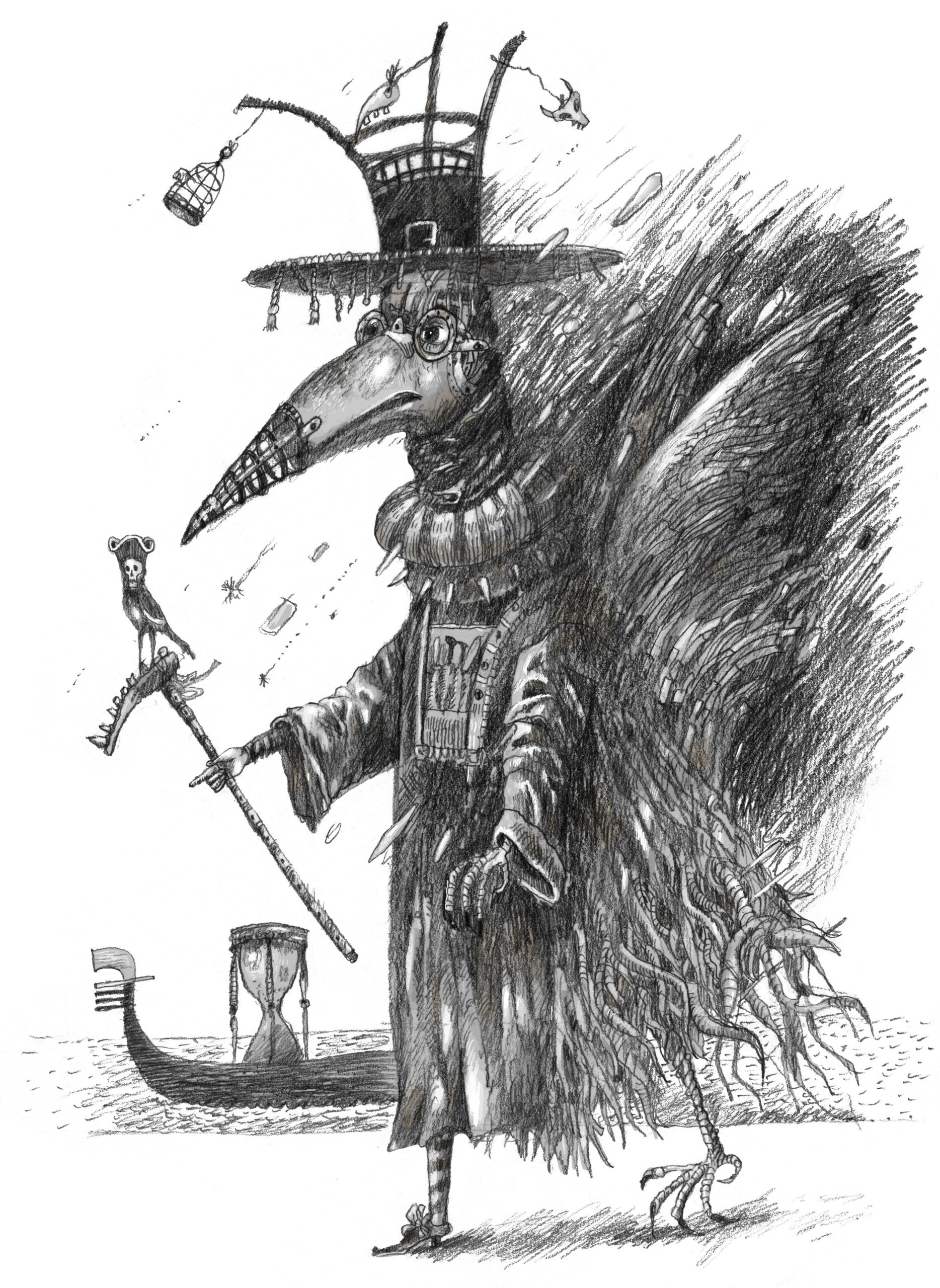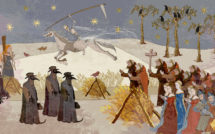

This is part of our Campus roundtable on Teaching Medieval in Modern Plague Times.
An advantage to teaching a medieval and early modern Western history survey course during a worldwide pandemic is that there is a corresponding historical event that is comparable to the present situation that furnishes a useful exercise for reflection on the human condition. Although some of students occasionally appeared more disconnected and less participatory after the class transitioned online—perhaps inevitable as “Zoom fatigue” set in towards the end of the semester—everyone became more garrulous during our discussion of the Black Death in Europe as they readily drew on their own experiences of the pandemic. Often medievalists have to do most of the intellectual labor themselves if they want to draw connections between past and present in their classes, but the experience of COVID-19 has created a social situation that is relatable, if not in reality identical, to the time of the plague of 1347–1353. Giovanni Boccaccio’s account of the plague and its effects on the Florentine population in 1348 resonated with my students when they read it three weeks into lockdown. They were more interested in the symptoms and transmission of yersinia pestis than any other class that I had taught up to that point, and we discussed differences between the coronavirus and plague. But they were even more taken with the societal impact that Boccaccio vividly described. They compared the poet’s account of sudden death and mass graves to what they were seeing being dug in New York City during the early stages of the pandemic. Repeatedly someone would make an observation about how people’s reactions today were very similar to those of people in the fourteenth century, whether it was ignoring the danger to go out or choosing to isolate, be resigned, or panic. One young man said that he had relatives who did not take the virus seriously, and pointed out that their attitude was the same as those who continued to frequent taverns in Boccaccio’s account. Another related her how it seemed that economic activity throughout most of the world had come to a standstill as it had in medieval Florence and all of Europe at the time. The class came to the collective conclusion that human nature has not changed since the Middle Ages, which was an insight that could only come from personal experience. The classes on the Black Death gave my students the opportunity, through comparison with accounts of medieval experiences, to use the past as a lens through which to process what was going on in society around them, which is one of the benefits that studying medieval history has to offer.
The effects of the coronavirus were not always so rewarding. I and my fellow adjunct professors at Montgomery College in Rockville, Maryland had to adapt rapidly in order to complete the rest of the semester after the board chose to immediately cancel classes in the middle of the last week before spring break. This happened to be a day before I had scheduled my students to take the midterm exam, so I ended up quickly putting the midterm on Blackboard and making it open note. My one-hundred-level Western history class covered a broad range of topics from the fall of Rome to the seventeenth century in Europe that included: the rise of Christianity and monasticism, Charlemagne’s empire and the Carolingian Renaissance, feudalism and chivalry, the Norman Conquest of England, the Investiture Controversy, the Crusades, new religious movements in the high Middle Ages, the Black Death, Islamic Spain and the Reconquista, the Italian Renaissance, the Protestant Reformation, the discovery of the New World and mercantilism, the development of modern nation states (both in the Middle Ages and early modern periods), the English Civil War, and practices of absolutism and constitutionalism. The fact that, as an introductory course, it was heavily lecture-oriented made it easier in some ways to continue in an online format, but engaging with students remotely about the material became more of a challenge.
I cannot say that I was particularly pedagogically innovative during the second half of the semester. It was the first time that I had taught this particular course, and since it had been going well, and because I was also having to transition to working from home for the medieval studies journal Speculum, I retained the same lecture topics, assignments, and basic structure. Students continued to write weekly reflection papers on questions about the assigned primary sources to make sure that they kept up with the reading, and this was instrumental for keeping at least some of my students engaged with the material. What I did not want to sacrifice to the pandemic was the analysis of primary sources for authorial purpose and historical context, which I have found that my students are able to do better when they complete exercises that compare several texts on the same theme. Our virtual discussion on the Black Death was one of the instances where encouraging the comparative approach with the present day proved beneficial. In order to preserve comparative analysis when this became more difficult to do during online discussions, I also developed the final paper into a five- to six-page essay on one of the two movements we covered in European history that are generally considered to have caused a caesura between the “medieval” world and the “modern,” namely the Renaissance and the Protestant Reformation. Using the primary sources that we had discussed in class and were available on Blackboard and in the class sourcebook—I designed the prompt to require no additional research to account for the fact that the campus library was closed and the semester was tumultuous enough already—I asked them write about the differences and similarities between medieval and modern intellectual pursuits or religious ideas and practices, and then to evaluate for themselves whether they thought these deserved to be considered major breaking points. The paper got students to explore for themselves the meaning of the historical concepts “renaissance” and “reform,” how historians identify paradigm shifts, and how new intellectual and faith movements might have contributed to creating elements that comprise European modernity.
The main change to the class structure that I implemented was that I made lectures asynchronous in order to give students more flexibility. I recorded lectures on the PowerPoint slides in advance on Mondays and Wednesdays for them to watch when they could, uploading them to Blackboard along with short outlines of the lectures. On Fridays, the class came together in a live group discussion section hosted on Blackboard Collaborate to talk about the primary sources that they had been assigned for the week. In order to make sure that students were watching the lectures and understanding the material, I created short multiple-choice quizzes for my students to take that tested their comprehension of each lecture’s contents. I also arranged to meet with each of them one-on-one via Zoom to discuss their paper topics. Overall, retaining the main structure and assignments with this ad hoc arrangement seemed to work well enough because I had a small class size and was able to keep on top of the progress of my twelve students. However, the choice to go with an asynchronous style of lecturing resulted in a cost to the quality of instruction. After a few weeks of recorded lectures, one of my more engaged students told me that it was not as clear what the main points were, though the quizzes had helped him in this regard. What probably detracted was that I could not answer questions live as I lectured, and for several of the students, back-and-forth discussion seemed to have been integral to how they learned. In my experience, Montgomery College students generally demonstrate a desire to engage through participation, so instruction must have suffered when the ability to ask questions was reduced to one day a week. I also tended to have more in-person meetings and impromptu after-class discussions to go over material and assignments with my community college students than with those I had taught at Catholic University, and, considering that I heard much less from several of them outside of class, the Zoom office hours did not appear to be an appealing substitute for them. In hindsight, I wish that I had given more thought to how to replace more of the live discussion component that was lost. For a virtual community college class like this in the future, I would add an online discussion board in order to allow them another form of active participation that might better suit their current living situations. I would also record the weekly live discussions so that students could use them to review the material on their own.
A result of teaching during the pandemic that deserves mention is how much it revealed about the struggle of some people in higher education, particularly in a community college setting, to access basic technology off campus. I had two students who had problems with going online. One student had little or no internet for the first two weeks after the transition and ended up having to switch living quarters in order to rejoin his classes. Another had internet but all of the devices in his family home were over ten years old, which meant that the connection was slow so he could not download my lectures or participate in discussion unless he called in. He could view YouTube, though, so I also uploaded all of the lectures to that platform for him, which I had to spend some time learning how to do. He eventually ended up buying a new phone so that he could access the Blackboard features with it. Students were not the only individuals I knew who had such problems. Just before the mandate to move classes online was handed down, an elderly English instructor whom I became acquainted with confided in me that he was worried about the transition to online classes and the shutdown of the college because he did not have internet at his apartment and relied on the campus computers for all digital communication. I do not think that this instructor’s situation was common to others, but it raised the question of how many more instructors would be struggling to obtain the bare necessities to teach from home. The college did work to meet some of the technological needs of students and professors by providing laptops for those who needed them, but with everyone caught off guard it is difficult to know whether everyone who needed technological aid received it.
Since many individuals enrolled in community college are non-traditional students, the technological demands of remote learning are not the only obstacle for them to overcome. One of my students had a job that was affected by the pandemic, which in turn affected her participation in the course. Towards the end of the semester her manager became ill with COVID-19, and therefore she had to take on more hours and become the acting manager. Her new shifts conflicted with the original time of our class, so she could no longer attend the Friday discussion sections. All that I could do in this situation was be more flexible about her missing the last few sections and ask her to meet me in office hours to discuss what she had missed. As we have all settled into the reality of new schedules and work environments resulting from the coronavirus, issues like this might be rarer, but it is still important to remember that illness, even of those whom are not our students, might continue to impact our student’s ability to do coursework going forward.
Although I am not currently teaching, I am preparing an interdisciplinary honors course on the Middle Ages from Charlemagne to Chaucer at Catholic University of America in the Spring. The things that I plan to change regarding my method of instruction will be to make all sessions live, as this class will be more discussion based, but record it for students who are not able to attend, and to have myself recorded when I am lecturing rather than just taping my voice on the PowerPoint. In order to circumvent the dreaded difficulty of anonymity that comes from not being able to see their faces if they choose not to turn on their cameras (something which occurred with my students at Montgomery), I am going to have individual Zoom meetings with each student within the first two weeks of class in order to get to know them. Considering the positive response that I have received from my previous class when discussing the Black Death, it and late medieval medical knowledge will be treated in depth as a separate theme. One of the papers assigned will be a comparison of medieval sources on the plague and documents on COVID-19 symptoms, mortality, and social effects. Since this modern-day pestilence is not going away anytime soon, I am of the opinion that it is better to lean into the subject of disease and its psychosocial repercussions, about which the medieval world has much to teach us.
Carol Anderson received her PhD in medieval history from The Catholic University of America and is currently the Assistant Editor for Speculum: A Journal of Medieval Studies. She occasionally works as an adjunct professor in the Washington, D.C. area.
Photo: Plague Doctor, hand drawn illustration. Symbol of death and plague. Medieval character. Pencil drawing | Shutterstock
Published on December 8, 2020.




